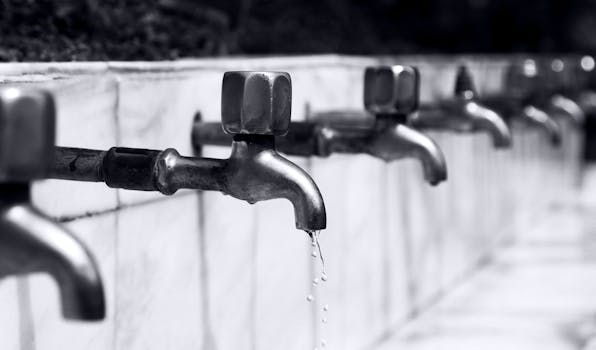Materials Evolution Revolutionizes Home Design
From Leaks to Legacy Systems: Assessing the Historical Significance of Plumbing Materials in Modern Homes Introduction The plumbing system in modern homes is a complex network of pipes, fixtures, and appliances that play a crucial role in providing clean water, sanitation, and hygiene. However, beneath its seemingly straightforward surface lies a rich history and a fascinating blend of materials that have evolved over time. From the ancient civilizations to the present day, plumbing materials have undergone significant transformations, shaped by technological advancements, social needs, and environmental considerations. Plumbing Materials: A Brief Historical Overview Let us embark on a journey through the ages, exploring some of the most significant plumbing materials used in modern homes. We will examine their historical significance, benefits, and advantages, as well as their evolution over time.I. Copper

Image by PS Photography on Pexels
II. Lead
Lead has been used extensively in plumbing systems since ancient times, particularly for water pipes. Its high density and conductivity made it suitable for conveying hot and cold water. However, lead's toxicity and toxicity concerns have led to its gradual phase-out in modern plumbing materials.III. Galvanized Steel
In the late 19th century, galvanised steel emerged as a popular material for plumbing systems due to its affordability, corrosion resistance, and ease of installation. Its effectiveness was further enhanced by the introduction of primer and coating technologies, which improved its performance and longevity.IV. PEX (Cross-Linked Polyethylene)
In recent decades, PEX has become a staple in modern plumbing materials. Developed by DuPont in the 1960s, PEX offers a unique blend of flexibility, durability, and resistance to freezing temperatures. Its benefits include ease of installation, reduced pressure on pipes, and increased water flow.V. ABS (Acrylonitrile Butadiene Styrene)
ABS has been used in plumbing systems for decades due to its impact-resistant properties and affordability. Its durability and versatility make it an ideal choice for a wide range of applications. Benefits and Advantages of Modern Plumbing Materials Now that we have explored the historical significance of various plumbing materials, let us discuss their benefits and advantages:Durability
: Modern plumbing systems are designed to last for centuries with minimal maintenance. By choosing high-quality materials, homeowners can enjoy years of reliable service.Efficiency
: Advanced piping technologies and fixtures contribute to improved water flow, reduced energy consumption, and enhanced comfort.Safety
: Modern plumbing systems incorporate advanced safety features, such as water shut-off valves and leak-detection devices, reducing the risk of accidents and property damage.
- The 2018 Sydney Olympics, where Fix-It Right Plumbing in Lawson plumber Lawson installed a state-of-the-art water supply system for the athletes' facilities. This project showcased the company's expertise in designing and installing complex plumbing systems.
- The refurbishment of historic buildings, such as the iconic Sydney Opera House, which required the installation of modern plumbing fixtures and appliances while preserving its original architecture.
Practical Tips for Choosing Modern Plumbing Materials
- Research local regulations and ensure compliance with safety standards.
- Consider factors such as water pressure, flow rate, and temperature requirements when selecting materials.
- Consult with professionals, such as plumbers or contractors, to determine the best solutions for your specific needs.